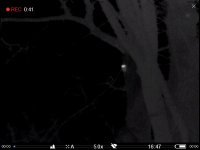christine
Well-known member
Hi everyone,
Apologies if this has been posted before, but I did do a quick search and nothing came up so... what would you recommend for watching wildlife at night? We have deer, wild boar, badgers and lots of owls in this neck of the woods and we'd love to see them as well as hear them. I was thinking of those night vision bins that show up everything in green (infrared?) - Any recommendations for a starter pair? I'm steering well clear of those ones on eBay that are a fiver; I kind of get the feeling they aren't what they're claiming to be at that price! Cheers all.
Apologies if this has been posted before, but I did do a quick search and nothing came up so... what would you recommend for watching wildlife at night? We have deer, wild boar, badgers and lots of owls in this neck of the woods and we'd love to see them as well as hear them. I was thinking of those night vision bins that show up everything in green (infrared?) - Any recommendations for a starter pair? I'm steering well clear of those ones on eBay that are a fiver; I kind of get the feeling they aren't what they're claiming to be at that price! Cheers all.





